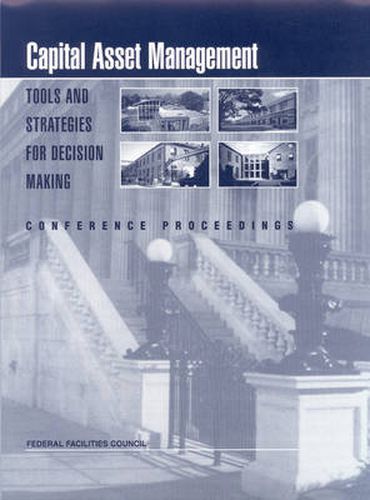Readings Newsletter
Become a Readings Member to make your shopping experience even easier.
Sign in or sign up for free!
You’re not far away from qualifying for FREE standard shipping within Australia
You’ve qualified for FREE standard shipping within Australia
The cart is loading…






Federally owned capital assets include some 500,000 buildings and similar facilities worldwide acquired during 200 years of government operations. Government facilities are used to defend the national interest; conduct foreign policy; house historic, cultural and educational artifacts; pursue research; and provide services to the American public. These buildings and structures project an image of American government at home and abroad, contribute to the architectural and socioeconomic fabric of their communities, and support the organizational and individual performance of federal employees conducting the business of government . Federal facilities embody significant investments and resources and therefore constitute a portfolio of public assets. At least 30 separate agencies manage these facilities. As stewards of this public investment, federal facilities program managers face a number of challenges.
In the 1990s Congress and the Executive Branch took a number of initiatives to improve capital asset decision making in the federal government. These include enacting the Government Performance and Results Act of 1993, the Federal Acquisition Streamlining Act of 1994, the Clinger-Cohen Act of 1996 and a series of federal financial accounting standards; developing the Capital Programming Guide (1997); and appointing the President’s Commission to Study Capital Budgeting (1997). Senior and mid-level agency officials are now seeking ways to implement these initiatives efficiently and effectively.
The Federal Facilities Council (FFC) sponsored a conference entitled Capital Asset Management: Tools and Strategies For Decision Making to highlight strategies and ideas for capital asset management so that federal and other public agencies can improve decision making for facilities investment. Held at the National Academy of Sciences in Washington, D.C., on September 13, 2000, the conference featured speakers from the public, non-profit, and private sectors.
Capital Asset Management: Tools and Strategies For Decision Making: Conference Proceedings summarizes the presentations made at that conference. The speakers focused on trends and best practices in capital budgeting; capital asset decision making processes in three federal agencies; building a case for capital reinvestment; and new tools for federal agencies. Online resources referred to by the speakers are listed in Appendix A. Appendix B contains the speakers’ biographies.
$9.00 standard shipping within Australia
FREE standard shipping within Australia for orders over $100.00
Express & International shipping calculated at checkout
Federally owned capital assets include some 500,000 buildings and similar facilities worldwide acquired during 200 years of government operations. Government facilities are used to defend the national interest; conduct foreign policy; house historic, cultural and educational artifacts; pursue research; and provide services to the American public. These buildings and structures project an image of American government at home and abroad, contribute to the architectural and socioeconomic fabric of their communities, and support the organizational and individual performance of federal employees conducting the business of government . Federal facilities embody significant investments and resources and therefore constitute a portfolio of public assets. At least 30 separate agencies manage these facilities. As stewards of this public investment, federal facilities program managers face a number of challenges.
In the 1990s Congress and the Executive Branch took a number of initiatives to improve capital asset decision making in the federal government. These include enacting the Government Performance and Results Act of 1993, the Federal Acquisition Streamlining Act of 1994, the Clinger-Cohen Act of 1996 and a series of federal financial accounting standards; developing the Capital Programming Guide (1997); and appointing the President’s Commission to Study Capital Budgeting (1997). Senior and mid-level agency officials are now seeking ways to implement these initiatives efficiently and effectively.
The Federal Facilities Council (FFC) sponsored a conference entitled Capital Asset Management: Tools and Strategies For Decision Making to highlight strategies and ideas for capital asset management so that federal and other public agencies can improve decision making for facilities investment. Held at the National Academy of Sciences in Washington, D.C., on September 13, 2000, the conference featured speakers from the public, non-profit, and private sectors.
Capital Asset Management: Tools and Strategies For Decision Making: Conference Proceedings summarizes the presentations made at that conference. The speakers focused on trends and best practices in capital budgeting; capital asset decision making processes in three federal agencies; building a case for capital reinvestment; and new tools for federal agencies. Online resources referred to by the speakers are listed in Appendix A. Appendix B contains the speakers’ biographies.